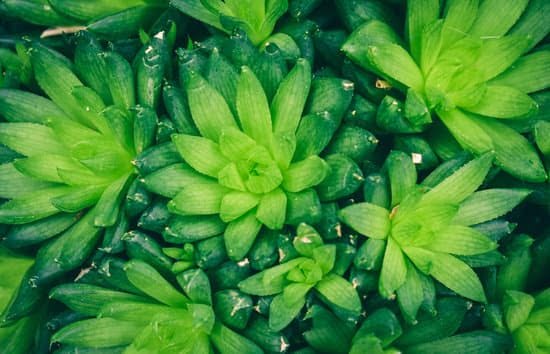As spring arrives, it’s the perfect time to get your hands dirty and start planting your own vegetable garden. Spring vegetable gardening ideas offer a variety of options for growing fresh produce at home, from planning and preparing the soil to nurturing and harvesting the bounty. Whether you’re a seasoned gardener or just starting out, there are endless possibilities to explore when it comes to spring vegetables.
When it comes to embracing the vibrancy of spring vegetable gardening, it’s important to choose the right vegetables that thrive in the springtime. From crisp lettuces and vibrant radishes to sweet peas and tender asparagus, there are plenty of options to consider for your spring garden. With proper planning and preparation, you can set yourself up for a successful and bountiful harvest.
In this article, we’ll explore everything you need to know about starting a thriving spring vegetable garden. From preparing the soil to best practices for seeding and transplanting, we’ll cover all the essential steps for getting your garden off to a strong start. Get ready to roll up your sleeves and embrace the beauty of spring with these vegetable gardening ideas.
Planning for Success
When it comes to spring vegetable gardening, choosing the right vegetables for your garden is essential for a successful and bountiful harvest. As you plan for success in your spring garden, consider starting with cool-season vegetables that thrive in the moderate temperatures of spring.
Some popular options for spring vegetable gardening include lettuce, spinach, kale, radishes, carrots, peas, and broccoli. These vegetables not only tolerate the cooler temperatures of spring but also thrive in them, making them ideal choices for your spring garden.
In addition to choosing cool-season vegetables, it’s important to select varieties that have shorter maturity dates. This is crucial because as the weather warms up in late spring and early summer, some cool-season crops may bolt or turn bitter if they are not harvested in time. Look for quick-maturing varieties of your favorite vegetables to ensure a successful harvest before the heat of summer sets in.
When selecting vegetables for your spring garden, don’t forget to consider your family’s preferences and dietary needs. Incorporating a variety of vegetables that you enjoy eating will make tending to your garden more enjoyable and rewarding. Whether you prefer leafy greens for salads, root vegetables for roasting, or crunchy snap peas for snacking, there are plenty of options to choose from when planning your spring vegetable garden.
As you plan for success in your spring vegetable garden by choosing the right vegetables, take advantage of this opportunity to try new varieties or experiment with different planting techniques. With careful planning and thoughtful selection of vegetables suitable for the season, you can set yourself up for a productive and satisfying experience in growing your own fresh produce.
Preparing the Soil
When it comes to spring vegetable gardening ideas, one of the most important steps is preparing the soil for your garden bed. Good soil preparation is crucial for the success of your vegetable garden, as it provides the necessary nutrients and structure for your plants to thrive.
One of the first steps in preparing your garden bed is to remove any weeds or debris from the area. Weeds can compete with your vegetable plants for water, sunlight, and nutrients, so it’s essential to clear them out before planting.
After clearing the area, it’s important to loosen and aerate the soil. This can be done using a garden fork or a tiller. Aeration helps improve drainage and allows plant roots to penetrate the soil more easily, leading to healthier and more robust growth.
Once the soil is aerated, you may also want to consider adding organic matter such as compost or well-rotted manure. This will enrich the soil with valuable nutrients and improve its texture. It’s recommended to add a layer of organic matter several weeks before planting your spring vegetables to give it time to integrate into the soil.
| Soil Preparation Steps | Benefits |
|---|---|
| Remove weeds and debris | Prevents competition for resources |
| Loosen and aerate the soil | Improves drainage and root penetration |
| Add organic matter | Enriches soil with nutrients and improves texture |
By following these tips for preparing your garden bed, you’ll be setting a solid foundation for a successful spring vegetable garden. Healthy, nutrient-rich soil will provide your plants with everything they need to grow and produce an abundant harvest of fresh, flavorful vegetables. With proper preparation, you’ll be on your way to enjoying a bountiful crop of homegrown produce in no time.
Seeding and Transplanting
When it comes to starting your spring vegetable garden, the process of seeding and transplanting is key to setting the stage for a successful harvest. Whether you’re starting from seeds or transplanting seedlings, there are best practices to follow to ensure that your vegetables thrive in the springtime.
Starting From Seeds
For vegetables like tomatoes, peppers, and cucumbers, starting from seeds is a cost-effective way to grow a wide variety of plants. When seeding indoors, be sure to use clean seed trays or pots with drainage holes to avoid waterlogged soil. Use a high-quality potting mix and follow the specific seeding depth and spacing instructions for each type of vegetable. Keep the soil consistently moist and provide adequate light for germination.
Transplanting Seedlings
If you opt for transplants, choose healthy seedlings from a reputable nursery or start your own from seeds. Be mindful of the recommended planting dates for your region and acclimate transplants to outdoor conditions before planting them in the garden. When transplanting, be gentle with the roots and handle them carefully to minimize root shock. Provide ample water after planting and monitor their progress as they adjust to their new environment.
Protecting Seedlings
Regardless of whether you start from seeds or transplants, it’s important to protect young seedlings from potential threats like harsh weather conditions and pests. Consider using row covers, cloches, or even homemade protective barriers like plastic bottles or milk jugs with the bottom cut off. These measures can help safeguard your seedlings while they become established in your spring vegetable garden.
By following these best practices for seeding and transplanting in your spring vegetable garden, you’ll be well on your way to a bountiful harvest later in the season. Whether you choose to start from seeds or opt for transplants, proper care and attention during this critical phase will set the stage for a successful garden full of fresh produce bursting with flavor.
Nurturing Your Garden
When it comes to spring vegetable gardening, proper nurturing of your garden is essential to ensure a bountiful harvest. From watering and fertilizing to pest management, here are some important tips to help you care for your spring vegetable garden:
- Watering: Proper watering is crucial for the health of your plants. In the spring, it’s important to monitor the moisture levels in the soil, as the weather can be unpredictable. Be sure to water your vegetables early in the morning or late in the evening to minimize evaporation. Additionally, using a soaker hose or drip irrigation system can help deliver water directly to the roots, reducing water waste.
- Fertilizing: Providing your spring vegetables with the right nutrients is essential for their growth and development. Before planting, amend your soil with organic matter such as compost or well-rotted manure to enrich it with essential nutrients. As your plants grow, consider applying a balanced fertilizer according to the specific needs of each vegetable variety.
- Pest Management: Protecting your spring vegetable garden from pests is key to ensuring a successful harvest. Consider using natural pest control methods such as companion planting, which involves growing certain plants together to repel pests or attract beneficial insects. Additionally, regularly inspecting your plants for signs of pest infestation and promptly addressing any issues can help prevent damage to your crops.
By following these tips for nurturing your spring vegetable garden, you can help ensure that your plants thrive and produce a plentiful harvest of fresh and delicious vegetables.
Maximizing Space
One of the key challenges for many vegetable gardeners, especially those with limited space, is how to make the most of the available area. Fortunately, vertical gardening and companion planting are two effective strategies that can help maximize your spring vegetable garden’s productivity.
Vertical gardening involves growing plants “up” instead of “out,” making use of trellises, stakes, hanging baskets, or vertical planters to support vining plants like tomatoes, cucumbers, and peas. This technique not only saves space but also makes it easier to care for your plants and harvest your crops. Additionally, vertical gardening can improve air circulation and exposure to sunlight, leading to healthier plants and higher yields.
On the other hand, companion planting involves growing different types of plants together in a way that benefits one or both species. For example, pairing pest-repelling herbs like basil and rosemary with susceptible vegetables like tomatoes and peppers can help deter pests naturally. Furthermore, some plant combinations have symbiotic relationships where their roots or foliage complement each other’s growth. For example, planting corn alongside beans and squash helps all three crops thrive through mutual support.
When using these techniques in combination, you can really make the most out of your garden space while promoting healthier plant growth and reducing the need for chemical pesticides and fertilizers.
| Vertical Gardening Benefits | Companion Planting Benefits |
|---|---|
| Saves space | Natural pest control |
| Improves air circulation | Mutual support for growth |
| Easier plant care/harvesting | Reduces need for chemical pesticides/fertilizers |
Harvesting the Bounty
Monitoring Maturity
When it comes to harvesting your spring vegetables, timing is crucial. One of the key factors in determining when to harvest your vegetables is monitoring their maturity. Different vegetables have different signs that signal they are ready for harvesting.
For example, you can tell that lettuce is ready for harvest when the leaves are large and loose, while carrots are ready when their tops start to push out of the ground. It’s important to keep a close eye on your plants and be familiar with the specific signs of readiness for each vegetable in order to ensure peak flavor and texture.
Proper Harvesting Techniques
Proper harvesting techniques are essential for maintaining the quality and flavor of your spring vegetables. When it comes to leafy greens like spinach or kale, you can simply use a pair of scissors to snip off outer leaves as needed, allowing the plant to continue producing throughout the season.
For root vegetables such as radishes or beets, gently loosen the soil around the base of the plant and pull upward, being careful not to damage the roots. Additionally, using a sharp knife or pruners to cut mature fruits and avoiding any rough handling can help extend the shelf life of your harvested produce.
Storage and Preservation
Once you’ve successfully harvested your spring vegetables, it’s important to store them properly in order to prolong their freshness. Some veggies like peas and cucumbers are best enjoyed immediately after picking, while others such as onions and potatoes require curing before storage.
Depending on the type of vegetable you’ve harvested, strategies such as refrigeration, canning, blanching, or freezing may be necessary in order to preserve them for future use. By taking proper storage measures, you can savor the delicious flavors of your homegrown produce long after they’ve been harvested.
By understanding these guidelines for harvesting your spring vegetables, you can make the most out of your garden’s bounty and enjoy fresh, nutritious produce straight from your backyard.
Creative Spring Vegetable Recipes
Once your spring vegetable garden is thriving and producing an abundance of fresh, flavorful produce, it’s time to get creative in the kitchen and make the most of your harvest. Cooking with seasonal vegetables not only ensures that you’re enjoying the freshest flavors, but it also allows you to experiment with new recipes and flavors. From salads to soups to main dishes, there are countless ways to incorporate spring vegetables into your meals.
One simple yet delicious way to showcase the flavors of your spring vegetables is by creating a colorful and nutrient-packed salad. Combine crisp, fresh lettuces with sliced radishes, snap peas, and tender asparagus, then toss with a homemade vinaigrette for a refreshing dish that’s perfect for warm spring days.
Alternatively, try roasting a medley of spring vegetables such as carrots, beets, and baby potatoes with olive oil and herbs for a satisfying side dish that pairs well with any protein.
For those looking for heartier meal options, consider incorporating your spring vegetables into comforting soups and stews. Blend fresh peas or spinach into a vibrant green soup, or add vibrant Swiss chard and tender young onions to a savory vegetable stew. These dishes not only highlight the natural flavors of your homegrown produce but also provide nourishing meals that are perfect for enjoying during the transitional season from winter to summer.
In addition to traditional cooking methods, don’t be afraid to experiment with grilling or sautéing your spring vegetables to bring out their natural sweetness and add a smoky flavor. Whether you’re making simple veggie skewers or incorporating grilled zucchini and eggplant into pasta dishes or sandwiches, there are endless opportunities to elevate your meals with the bounty from your spring vegetable garden.
Conclusion
As spring comes to an end, it’s time to celebrate the hard work and dedication you have put into your spring vegetable garden. From carefully planning and preparing the soil to nurturing and harvesting your bountiful crop, the fruits of your labor are now ready to be enjoyed.
Whether you planted crisp lettuce, juicy tomatoes, or colorful bell peppers, the joy of growing your own vegetables is unmatched. Your efforts have not only produced fresh and delicious produce but have also helped to reduce your carbon footprint and promote sustainability.
As you reflect on the success of your spring vegetable garden, take a moment to remember the satisfaction of watching your plants grow from seedlings into thriving vegetables. The process of caring for your garden has not only rewarded you with a rich harvest but has also provided countless health benefits. Spending time outdoors, getting physical activity through gardening tasks, and consuming fresh produce are all important contributors to a healthy lifestyle.
Looking ahead, consider keeping a journal in which you can jot down what worked well this season and what could be improved next year. You may want to research new spring vegetable gardening ideas that could enhance the variety and quantity of your future harvests. Continue experimenting with different vegetables, techniques, and recipes as you strive to make the most out of each growing season.
Frequently Asked Questions
What Vegetables Should Be Planted in the Spring?
In the spring, it’s ideal to plant vegetables such as peas, spinach, lettuce, radishes, carrots, and kale. These vegetables thrive in the cooler temperatures and are perfect for early spring planting.
How Do You Plan a Spring Vegetable Garden?
Planning a spring vegetable garden involves considering factors such as the available space, sunlight exposure, and soil quality. Start by choosing the right vegetables for your region and planting them in well-drained soil with proper spacing.
What Vegetables Can You Plant in May?
In May, you can start planting warm-season vegetables such as tomatoes, peppers, cucumbers, zucchini, and squash. These vegetables require warmer temperatures to thrive and can be planted after the danger of frost has passed in many regions.

Welcome to my gardening blog! I am passionate about plants and enjoy sharing my knowledge and experiences with others. In this blog, I will write about everything related to gardening, from tips on how to get started to updates on my own garden projects.





